For the both of us, one of the most valuable perks of preparing these posts is the opportunity to learn the lesser known histories of the cultures we cook.
To say the least, we had limited insight into the history of Zimbabwe and how a dish like Dovi came to be.
Little did we know that, even in a recipe as straightforward as this peanut stew, there would be such a complex and intertwined historical evolution involved.
Dovi and the Multiple Kingdoms of Zimbabwe
The most fundamental way to describe dovi is as a peanut stew… and a fairly easy one to make at that. What’s interesting, however, is that the Zimbabwean cuisine’s ever-prevalent peanut is not at all an indigenous crop to the area. In fact, the peanut is a fairly recent introduction into the lands thanks to trading with the Europeans.
It is this trading with the Europeans, and the near-obsession therewith, that has played a large part in how Zimbabwe is structured today.
The Various Trading Kingdoms of Zimbabwe
Little did the outside world know, but there was a great kingdom situated between the Zambezi and Limpopo rivers of southern Africa.
Zimbabwe’s recorded history begins even before that, however, when Bantu-speaking tribes arrived and settled in the region between the 3rd and 5th centuries AD. Archaeological discoveries – namely Iron Age-style tools and pottery – suggest that the region was host to an expansion of Bantu speaking tribes at least up until the 9th century.
Eventually, tribes of Shona-speakers settled in the lands of modern day Zimbabwe, which triggered a development of new societies speaking a cohesive set of dialects for a new language: Kalanga.
Using Kalanga as the common language, tribes first developed a federated coalition with that they could leverage to trade with the outside world. These coalitions grew more intertwined and sophisticated until culminating in the 11th century into the first of several true Kingdoms in the Zimbabwe valley: the Kingdom of Mapungubwe.
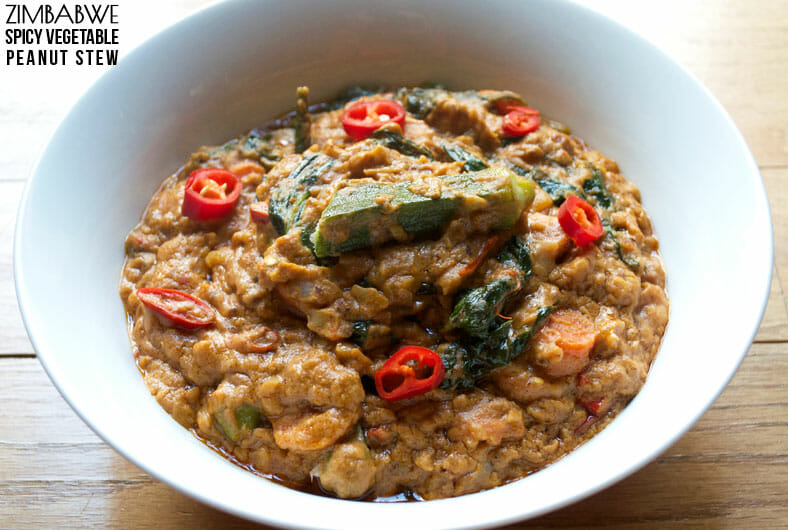
Great Zimbabwe and Other Kingdoms
Between the 11th and 13th centuries, the Mapungubwe gave rise to the first class-based social system in Southern Africa and the precursor to what would become the Kingdom of Zimbabwe.
It is the Kingdom of Zimbabwe that is now considered to be one of the greatest (and least known) world powers of its time. During this time, the Kingdom was thought to have advanced technologies on par with those of the Europeans, and they were extremely advanced in the building of great stone structures throughout the entire valley. In fact, the name Zimbabwe is considered as a derivative word of the Kalanga phrase nzi we mabwe or “homestead of stone.”
One thing that the Great Kingdom certainly engaged in was trade. As a result of territorial expansion from the highlands all the way down to the Swahili coast, the Kingdom of Zimbabwe now opened themselves up to trading with foreign civilizations. At first it was the Arabs and India with whom they traded precious metals like gold, copper and ivory, but there eventually came one trade partner in particular that would have a very significant impact on the future of Zimbabwe (and on dovi): the Portuguese.
Trading with the Portuguese
It was during the period of the Mutapa Kingdom, however, that trade with the Portuguese truly reached its peaceful apex. Around the middle of the 15th century, Prince Mutota in the Kingdom of Zimbabwe sent an expedition into Northern lands to find new sources of salt for the Kingdom. What ultimately transpired was a massive territorial expansion and the transition into the Mutapa Kingdom, which included all of modern-day Zimbabwe as well as parts of Mozambique.
It was during the lifetime of this kingdom, particularly during the 16th century, that we see most cooperative and productive trade activity and remnants of Portuguese influence. During this time, the Portuguese and the Mutapa developed very lucrative gold and ivory trading routes as well as the import of new crops into the lands as well.
Most specifically to dovi, it was the Portuguese who introduced the region to the peanut, a crop which has since become a paramount feature in most of modern-day Zimbabwe’s cuisine. We see peanuts being a very common ingredient in many parts of the world – such as the presence of peanuts in this vegan sesame and peanut bites from India, (tilkeladoo) or this salad from Indonesia dressed with a peanut sauce (gado gado), and of course Vietnam’s famous spring rolls with peanut dipping sauce (goi cuon).
Unfortunately, this tale doesn’t have a very happy ending. Like we saw with their relations to Mozambique, the Portuguese wanted more of a monopoly on the trade routes and production of various trading goods. Over time, the Mutapa Kingdom collapsed and was replaced by a more belligerent Rozwi Kingdom, which in turn also collapsed at the hands of the Ndbele people.
The transitions into these later phases of Zimbabwean history – including a period of British colonization as well as their post-independence existence – aren’t in the scope of this post, but they too played a particularly important role in shaping other areas of Zimbabwean cuisine as well.
For now, though, we can directly trace the origins of dovi back to the Portuguese and their introduction of the peanut to the region.
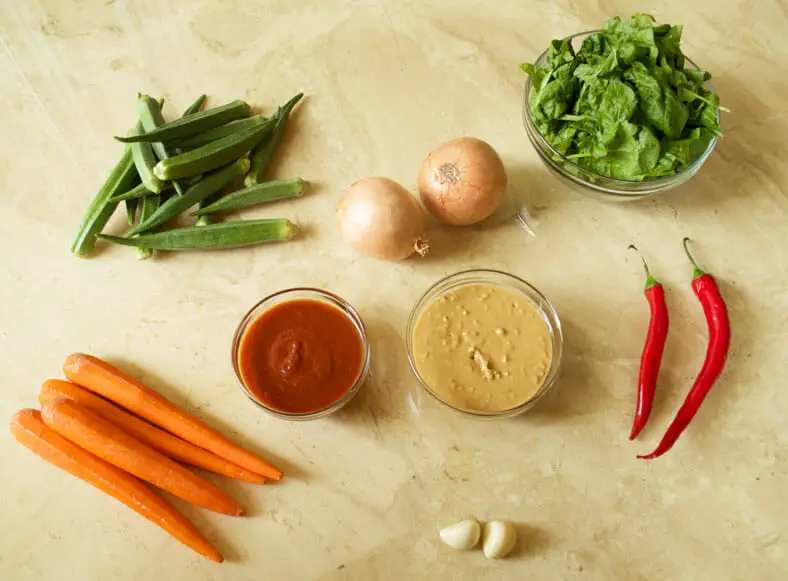
About this Peanut Stew Recipe
It’s important to note that many of the featured ingredients used for dovi are import ingredients that came after the “Age of Discovery” and open trade with the outside world.
Of course, there is the peanut, but other “import” ingredients that you’ll see featured in dovi are the carrot, okra and tomato. When made with meat (you’ll see our recipe doesn’t), even the chicken most commonly cooked into the peanut stew isn’t traditionally indigenous meat source. Beef, mutton and goat take those honors.
Nevertheless, dovi has become quintessentially Zimbabwean over time. To prepare it, you first start by creating a stewy base made up of crushed peanuts, onions, garlic and your stock or liquid of choice. Your goal here in the first phase is to mix all the ingredients together well enough such that you get a nice thickened peanut stew into which the remaining ingredients can go.
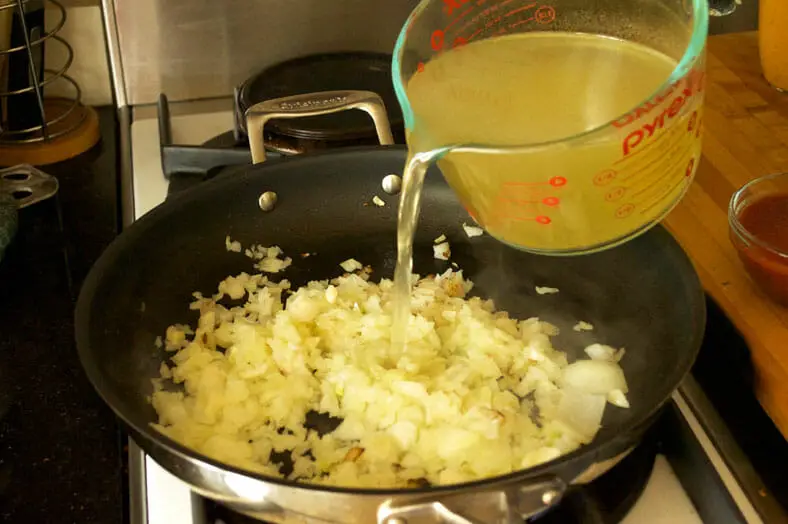
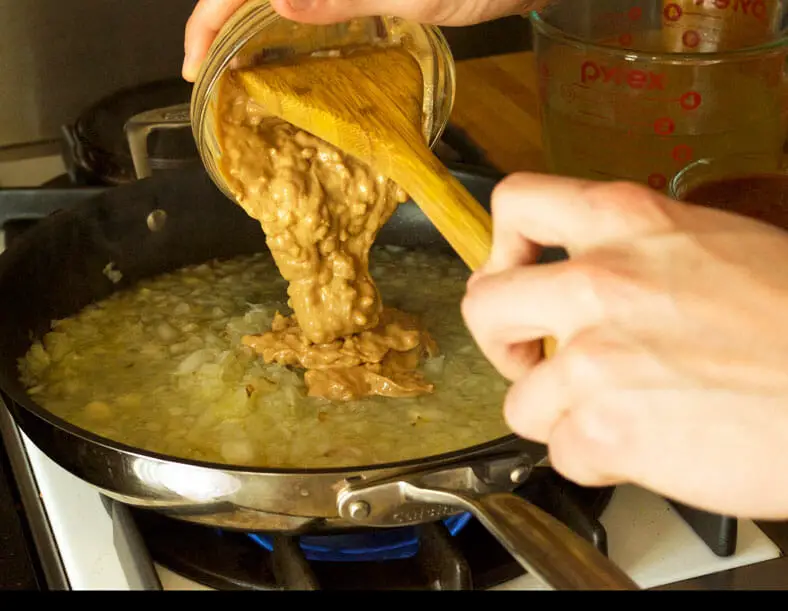
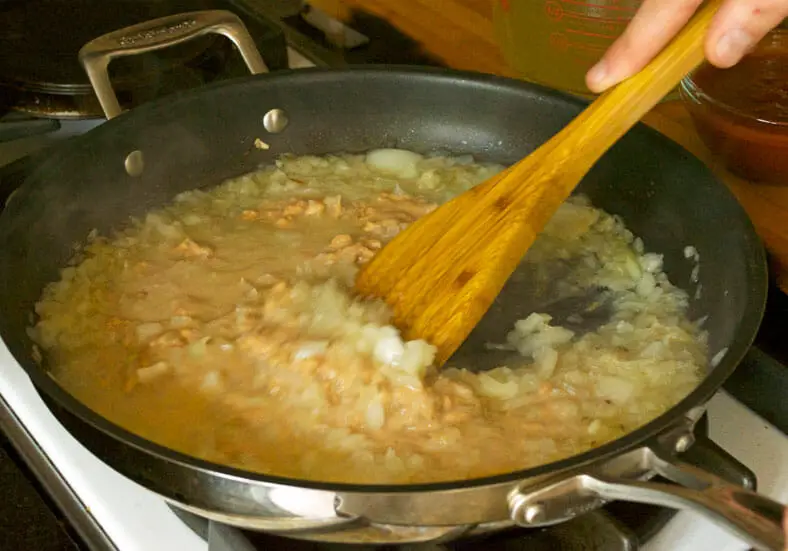
From there, you’ll add various aromatics and, if you enjoy a bit of heat, a bit of chili paste in order to give the dovi a little extra flair. At this point, you’ll also add your ingredients that need a bit extra to cook through – looking at you, carrots and potatoes – before you let the peanut stew to simmer for at least 10 minutes. If cooking with meat, this is a great time to add in your meat as well.

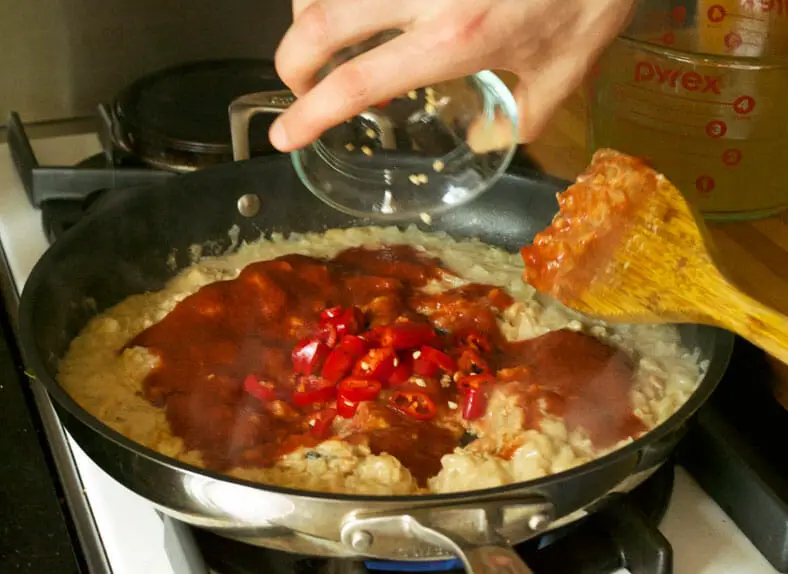
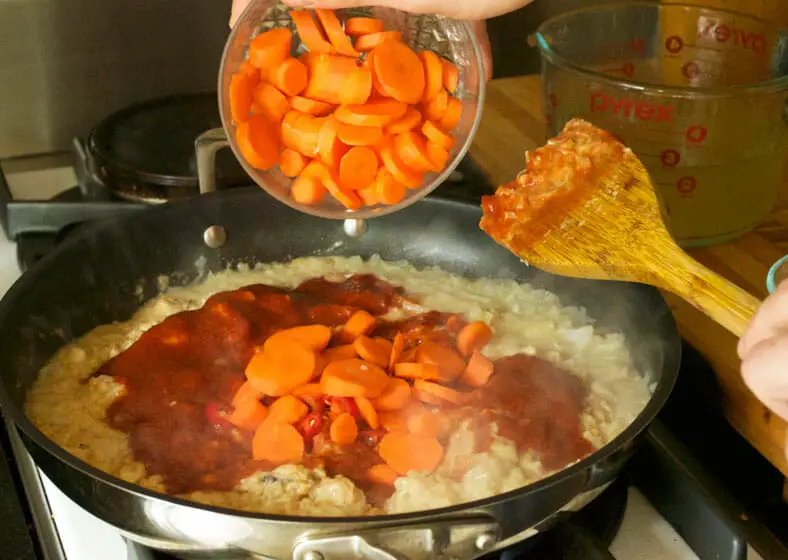


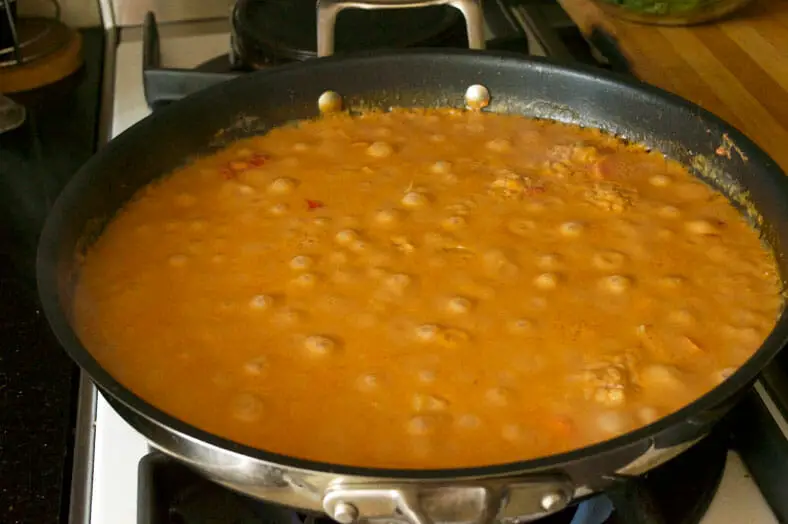
Finally, in your last 10 minutes, you’ll add your “quicker” ingredients like okra and, at the very end, your leafy green. Let everything mix together over a low simmer, then you’re done!

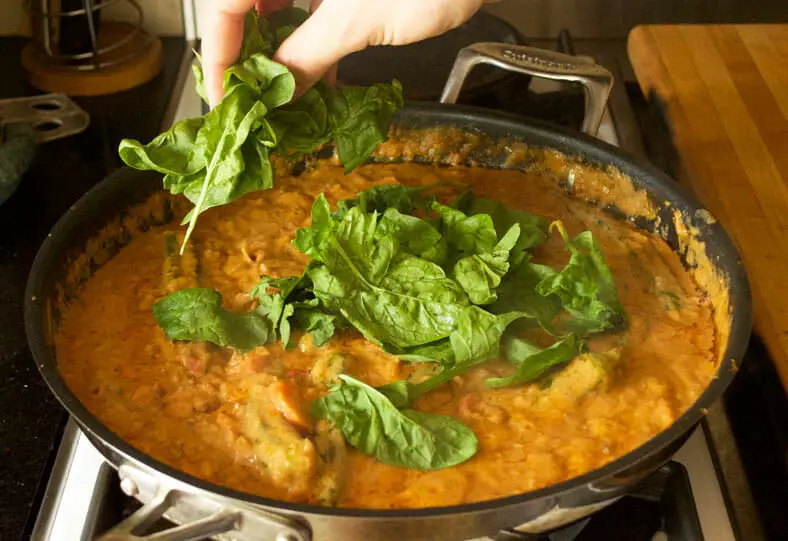
When eating your dovi, one of the most common accompaniments might be some sadza, which is a maize meal not at all unlike the South African mealiepap we’ve seen before. Sadza can be easily eaten with the hands and does a great job of soaking up the flavors of the dovi.
Our Take on the Recipe
As you might have already guessed, we decided to take a vegetarian spin on our original reference recipe. Part of the reason we decided to do this is because, in fact, meat can be a costly ingredient and therefore only added to dovi for special occasions. Purely vegetarian versions are just as commonplace as their meaty counterparts.
For the other ingredients we did a bit of ingredient subtraction. To simplify the dish, we removed sweet potatoes and turnips (both import ingredients, by the way), and we subbed spinach for the original cabbage more because spinach has more nutrients. We also changed canned tomatoes for a more liquidy tomato paste in order to get a more consistent liquid in the peanut stew.
Finally, we added some garlic and heat like we tend to do in most of our dishes. It’s a personal preference and one we wouldn’t recommend if you don’t like spicy, but the addition of both the aromatic garlic and chili peppers really did wonders for the dish.
Otherwise, dovi itself calls for little and is indeed very simple to make. Given the complex history that it took to get here, we’ll call that a good thing.
Pamusoroyi!
What ingredients would you put in your dovi? Comment below!
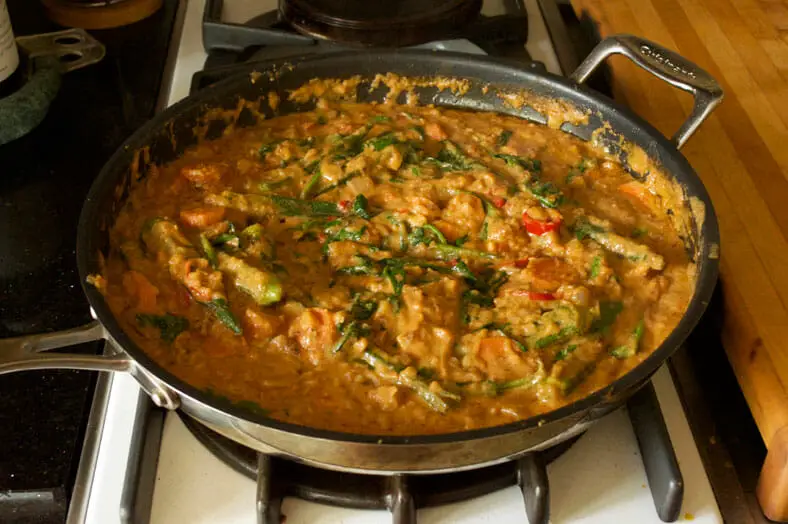

Dovi: Zimbabwean Peanut Stew
- Total Time: 30 minutes
- Yield: 4 people 1x
Description
Dovi: Zimbabwean Peanut Stew in olive oil and peanut butter.
Ingredients
- 2 tablespoons olive oil
- 2 onions, chopped
- 4 garlic cloves, minced
- 3 tablespoons of a hot chili or peri peri sauce (optional, but highly recommended)
- 2 red chili peppers, sliced thinly
- 1 cup peanut butter
- 4 cups vegetable stock
- 1 7 oz can of tomato paste
- 1 teaspoon cayenne pepper
- 4 carrots, chopped
- 1 cup okra, whole
- 2 cups of spinach
- Salt and pepper
Instructions
Stage 1 – Create Peanut Stew Base
- Take a large pot over medium-high heat and add your olive oil
- Once the oil is heated, add your onions and garlic. Cook together for 3 minutes as the onions become translucent
- Next, add 1 cup of vegetable stock, chili sauce and peanut butter. Using either a whisk or a slotted ladle, stir in the peanut butter until it has dissolved and mixed with the liquid
Stage 2 – Add Remaining Ingredients to Dovi
- Add the remaining vegetable stock, tomato paste, cayenne pepper and carrots. Reduce the head to medium-low and cover the pot to let the dovi simmer for ~10 minutes
- Next, add your okra and re-cover the pot. Simmer for another 8 minutes as the okra cooks (and helps to thicken the stew)
- Finally, add your spinach and mix in as the spinach shrinks and softens (roughly 2 minutes). Mix well into the stew, then take off your dovi off the heat. Serve and enjoy!
- Prep Time: 10 mins
- Cook Time: 20 mins
- Category: Main Dishes
- Method: Zimbabwean

I absolutely ADORE this style of peanut stew, although I think we just called it ‘African Peanut Stew’. I love how amazing it is after it sits overnight- This looks delicious Heather + Cyrus!
Thanks Arman! And you’re totally right.. it gets even better the next day 🙂
I love peanut stew and I’ll follow your lead (in choosing ingredients from among the multitude of possibilities) by subtracting okra and adding back in the sweet potatoes. A love vegetarian entree.I almost skipped the story of how this dish came to be because knowing that it involved an Africa and colonial powers, I knew the story wouldn’t end well. But of course, I read it and now I can’t wait for the dish that involves a post on the English in Zimbabwe.
A very fine substitution indeed, Laura! That actually sounds like quite the swap and one we might have to try over here as well 🙂
And yes, stay tuned for the English-inspired Zimbabwean dish. We’ve already got a few recipes tested and in mind for that one!
This looks so delicious and nutritious. Thanks so much!
Thanks Mickey! Indeed it is, and we’d totally recommend trying it. If you do, let us know how it goes! 🙂